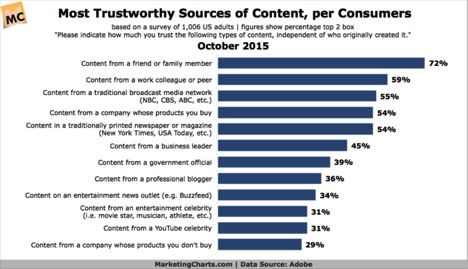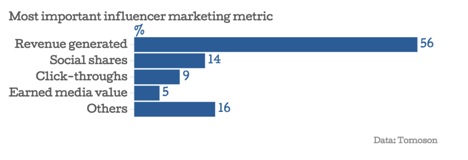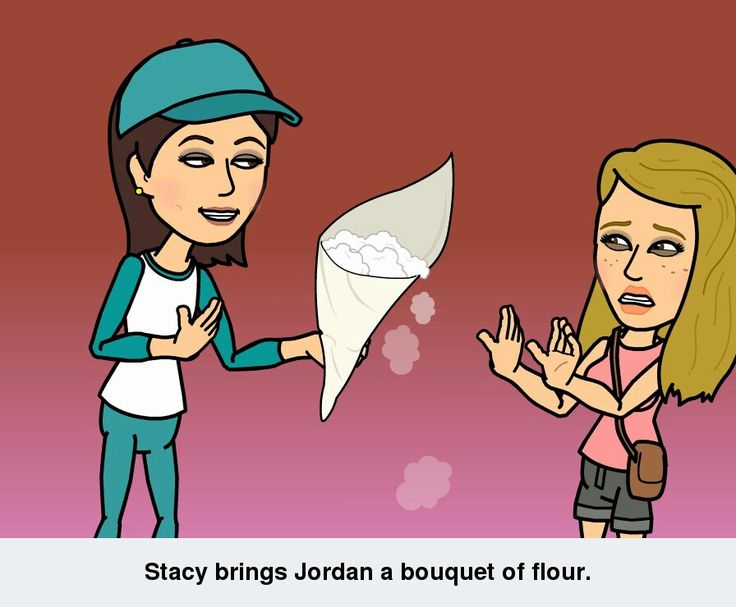2015 was a year of profound change. Millions of businesses around the world went through dramatic vicissitudes to improve their bottom line. Some succeeded, some failed, and some got stuck in the middle of the curve.
Now it’s time to look forward to the new year – 2016. Brands have the exciting opportunity to start fresh.
But what should be the next big step?
In the crowded digital landscape, you must provide serious value to capture the attention of your target audience. That’s not easy to do as consumers barely trust brands and remain skeptic of their advertising approach.
Perhaps that’s why 2016 is going to be the year of influencer marketing.
In fact, this marketing strategy could be the key to breaking the “hum drum normalcy” of customer engagement and conversions.
Why Influencer Marketing Will Rock in 2016
Influencer marketing can be used to achieve specific goals such as link backs, direct sales, referral traffic or simply impressions. Here’s why the upcoming year is ripe for this marketing tactic.
1. Everyday Experts Will Rise in Number
Celebrities ruled influencer marketing programs 5 years ago. However, long tail influencers (people with a small following but a lot of influence) were increasingly sought after in 2015.
Take a look at how many beauty and makeup enthusiasts made a video review about Louis Vuitton in the past year. Some of them received free products to review and then speak about the brand.
Image via: YouTube
The experts mentioned in this image have less than 10,000 subscribers, and a decent following on other social channels. But they have a big impact in terms of influence (just go through the comments and you’ll know why).
In 2016, more long tail influencers are expected to announce their presence on current social media channels (YouTube, Instagram, etc.), as well as on new platforms such as #fame and Periscope.
Because they do not have a celebrity status, their promotions feel more authentic, like being recommended a product/service by friends. Moreover, everyday influencers also charge less while collaborating with brands and appreciate the opportunity.
2. Consumers Will Look for Recommendations from Trusted Sources
In 2015, a study found that brands face a big obstacle when trying to reach young audiences:
84 percent of Gen Y don’t trust traditional advertising nor do they like it.
Mintel’s research on key consumer trends for 2016 found that only 36 percent of US consumers trust big brands to do the right thing. Overall, traditional marketing has failed to win consumer trust in the last few years.
But there’s good news. When it comes to trust, consumers are willing to listen to the people they know. A Nielsen study found that 84 percent of consumers believed recommendations from people they know yielded the greatest influence.
Adobe’s latest study shows what consumers consider as the most trustworthy sources of content:

Image via: MarketingCharts
The influencer’s relationship with his/her audience is more personal (almost like being friends or family), and therefore they have the power to sway opinions of their followers.
3. Brands Will Invest in Reliable ROI Tactics
Brands are investing heavily in content marketing strategies that are focused on digital avenues, but a research revealed that 60 percent of the marketing spend is wasted. Part of the reason is the declining trust of consumers in branded online campaigns.
Despite all the interaction you try to drive through digital strategies, consumers are looking to interact with brands outside of those carefully orchestrated campaigns. They want to learn about you from a friend or a trusted source.
Influencer marketing is earning its place as the way to cut through the noise in digital space and connect with people through a voice they like, recognize and trust.
According to the 1H 2015 Influencer Marketing Benchmarks Report, advertisers received $9.60 EMW (earned media value) for every $1.00 spent on influencer marketing programs in 2015.
Another report by Tomoson stated that businesses make $6.50 per $1 spent on influencer marketing.
Image via: Tomoson
The latter report highlighted that marketers considered the ROI on sales more important than earned media value from influencer marketing programs.
The data hints that influencer marketing could be a great way to quantify your ROI in 2016 compared to using conventional digital marketing channels for the purpose.
4. Consumers Will Welcome Co-Creation
Because brands have historically been involved in the creation of things they promote, their view of value remains dominant.
But consumers are beginning to challenge their logic of value creation, and now demand the notion of value to be customer-centric.
Co-creation is allowing that to happen. According to a report, 50 percent of Fortune 500 companies have included co-creation via community sourcing in their innovation strategy.
With influencers being highly in tune with the interests of their audiences, brands that give them an opportunity to co-create content marketing campaigns (or even products) may gain a competitive edge.
A great example of co-creation comes from Disney. The company collaborates with mothers who portray that the brand is all about experiences and satisfying your inner child.
Disney co-creates videos with mothers on its Disney Parks YouTube channel. Here’s an example:
Disney’s mom influencers give tips on how to get the most out of your visit to Disneyland.
They also rave about new announcements through their own social media channels and blogs.
In 2016, more brands are expected to partner with niche specific influencers to co-create marketing campaigns. This will help them generate brand awareness and ultimately ales.
New Year’s Influencer Marketing Predictions for Brands
According to Tomoson’s study, 59 percent of marketers plan to increase their influencer marketing budgets in the next 12 months. But for most of them, it’s a newborn marketing practice.
So how will they approach influencer marketing in 2016? Here are some predictions:
- Build Relationships with Influencers
Influencers sharing brand-related stories would drive marketing efforts in 2016. For that to happen, building relationships with the right influencers will be the key. Their open communication and modern appeal could make your brand the next big thing.
To identify the right influencers, brands will look at:
Influence: Kyle Wong, contributor at Forbes, recommended to measure influence using this formula:
Influence = Audience Reach (# of followers) x Brand Affinity (expertise and credibility) x Strength of Relationship with Followers.
Relevance: The name is simple enough. It implies people who know the brand well and are everyday experts in demonstrating the product/service offered by the brand. Relevance may sometimes be attached to a geographic location.
Selecting influencers based on their numbers in reach will become less important as brands turn to the above-mentioned metrics to identify the right influencers.
- Open Doors to Influencer-Generated Content
Several brands, such as Disney and Nike, have realized that influencer-generated content can have a greater impact on engagement and sales than branded content.
As a result, brands will open doors to influencer content that can be marketed organically through the power of influence and inspiration.
Expect the following types of content to be created or co-created by influencers in 2016:
- Creative
- Informative/educational/useful
- Entertaining
In terms of content creation, brands are expected to treat influencers with respect, not only as partners in content marketing, but also in terms of their input.
Brands have clear ideas of what type of content they want to post, but influencers know what is likely to resonate with their audience.
- Automate Influencer Marketing
Imagine that a brand wants to collaborate with 5 influencers for promoting a product/service. They need to search the web and social media to find everyday experts relevant to their selected category. After that, they need to verify their influence and content authenticity.
Once influencers have been identified, the brand should build a relationship, respond to queries, and discuss the content approach. After the launch of the campaign, it’s important to measure KPIs to track down each influencer’s performance.
All that takes time, which is why brands in 2016 will turn towards automated platforms that connect brands to the right influencers in the right channels distributing the right content at the right times.
Live tracking and reports will enable them to easily measure the effectiveness of the influencer marketing campaign.
With influencer marketing automation, you can engage influencers within any social channel, saving time and 60-70 percent of your budget.
Final Thoughts
Good use of influencer marketing in 2016 will be the key for brands to stay competitive. No matter what industry you’re in, you can leverage spheres of influence and deepen your connections with everyday experts via automation.
What do you think? Did you give a thought to using influencer marketing next year? Feel free to leave comments.
This post is also available in: Italian




